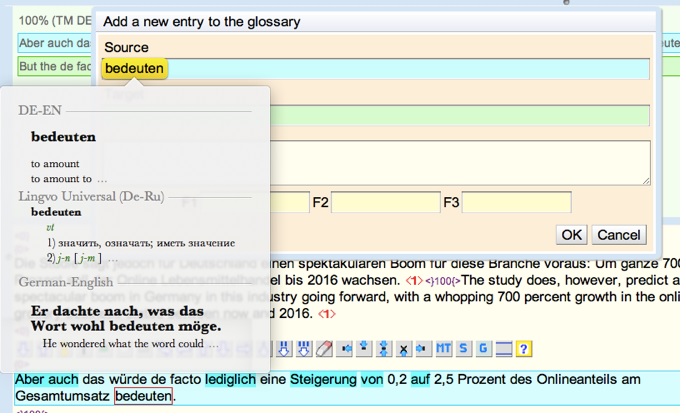

- #WORDFAST CLASSIC HOW TO CREATE A TM ZIP FILE#
- #WORDFAST CLASSIC HOW TO CREATE A TM PRO#
- #WORDFAST CLASSIC HOW TO CREATE A TM FREE#

That significantly compensates for the restricted usefulness of the translation memory.

The WFC has well organized glossaries, which are easy to use due to the shortcuts. After all, if the TM is of limited use, the CAT is helpless, just like a translator. TM here functions as a reference, except in rare cases when background information is appended to a piece (two or three brief paragraphs that repeat occasionally). Such content is usually unique and it is not possible to use TM to a satisfying degree: most of the sentences do not repeat. The author of this text has translated many pieces of news. On the contrary, you can work more efficiently with the selective use of the powerful glossary function in Wordfast Classic (WFC). To do so, first open the TM in a text editor and perform the necessary find/replace (match case and whole words only) with matching destination TM codes.For some types of translations translation memory (TM) and fuzzy matching are not very useful, but this does not mean that a CAT application itself is useless. For example, if you have a FR-FR to EN-US TM on Wordfast Pro, you will not be able to import a FR to EN aligned TM from AutoAligner into it. and not variant specific codes like EN-US, FR-FR, DE-CH, etc. Wordfast AutoAligner uses generic source and target language codes like EN, FR, DE, etc.
#WORDFAST CLASSIC HOW TO CREATE A TM PRO#
When appending an aligned TM to a Wordfast Pro TM, you need to make sure the TM language codes match the TM.

Note that it creates the TM in the TXT file format. After you edit it, go the Tools in AutoAligner and upload it there in order to convert it to a TM. You can edit it in Excel if the automatic result isn't good enough. The automatically created TM in the TMX file format that can be imported into Wordfast Pro and most third-party TM tools.Īn Excel (*.xls) file with the automatically aligned segments. The automatically created TM in the TXT file format for Wordfast Classic or Wordfast Anywhere.
#WORDFAST CLASSIC HOW TO CREATE A TM ZIP FILE#
Download it from AutoAligner or wait until you receive it by email (depeding your what you selected in the previous step).Įxtract (unzip) the zip file and you will get: The alignment process creates a zip file for you. You can also include formatting tags in the aligned segments if you want.Ĭlick on Align! and let AutoAligner work. You can swap the languages by clicking on the back-and-forth arrows in order to set the alignment language pair (source and target language).Ĭhoose whether you want to download the TM immediately and/or receive it by email. When AutoAligner uploads and processes the files, it auto-detects the languages and displays the result. AutoAligner automatically detects the languages in your documents. If your documents are multilingual, tick the relevant check box. Alternatively, you can drag-and-drop the files directly into the main box in the AutoAligner page. This opens the Wordfast AutoAligner webpage.Ĭlick on Add files and navigate to the source and target documents. Under the Wordfast Anywhere tab, click on the AutoAligner icon.
#WORDFAST CLASSIC HOW TO CREATE A TM FREE#
Using your browser, log in to (or create a new, free account at) Wordfast Anywhere at. To align your source and target files using AutoAligner, follow these steps: Wordfast AutoAligner allows you to align source and target documents translated without a translation memory tool and create a translation memory.


 0 kommentar(er)
0 kommentar(er)
